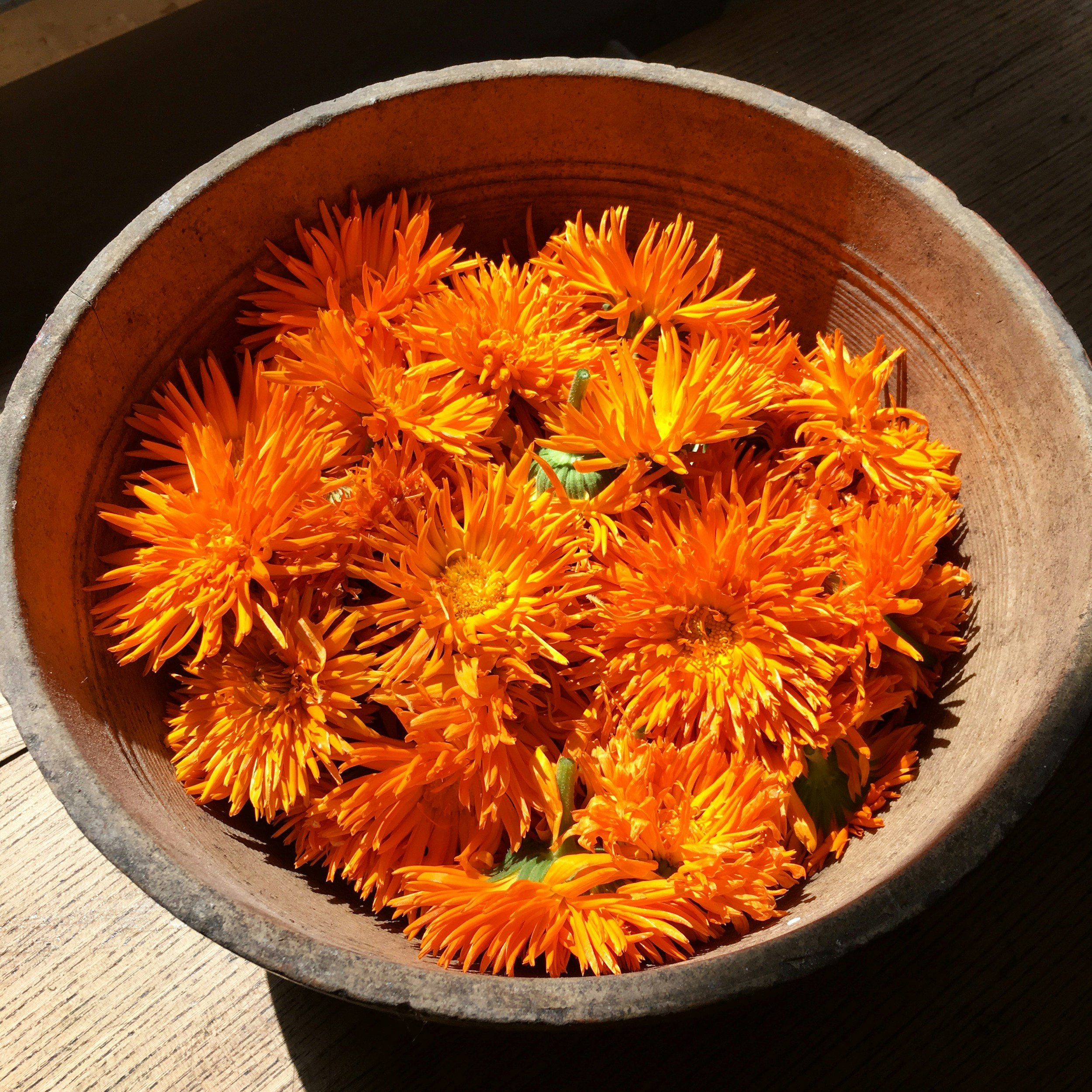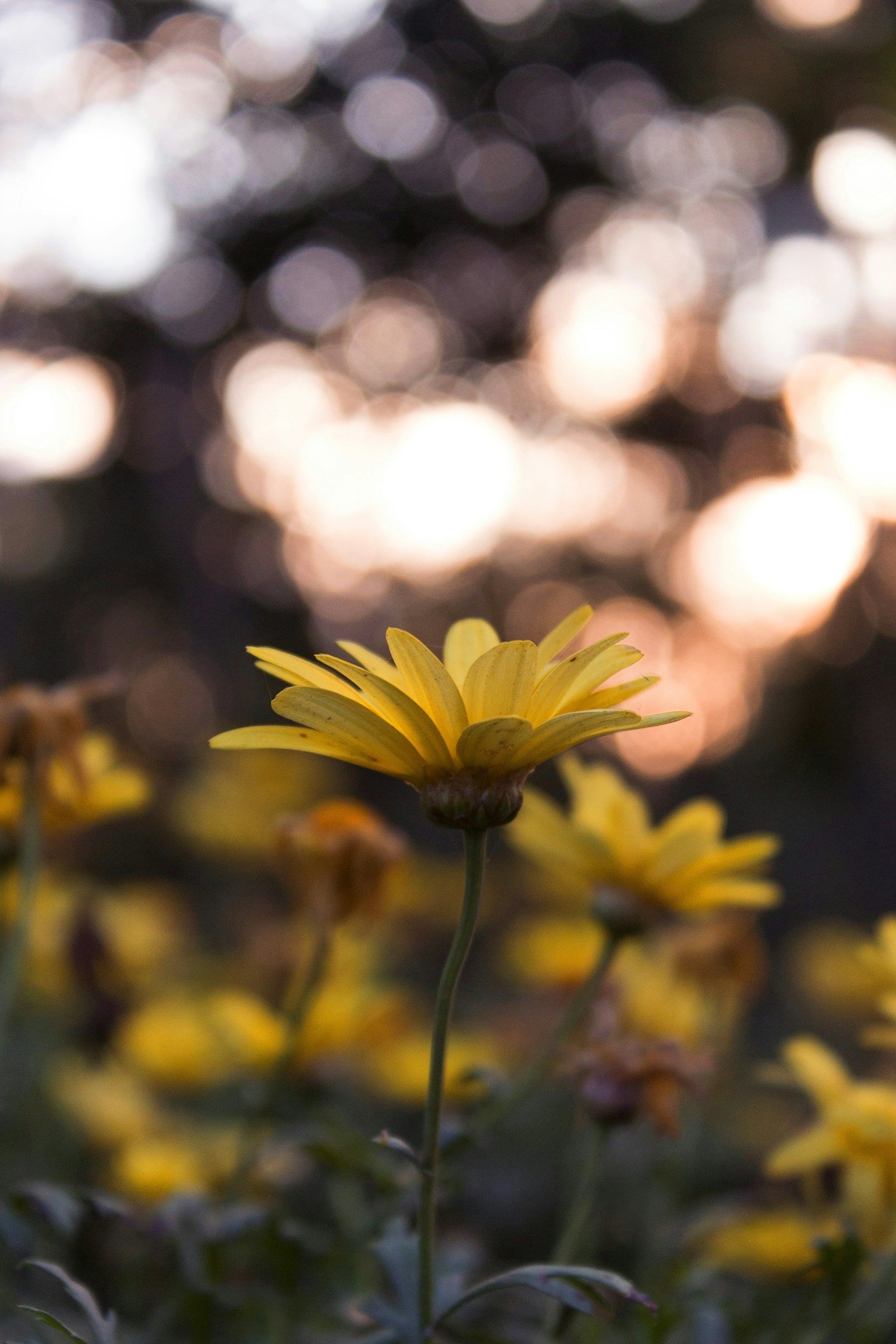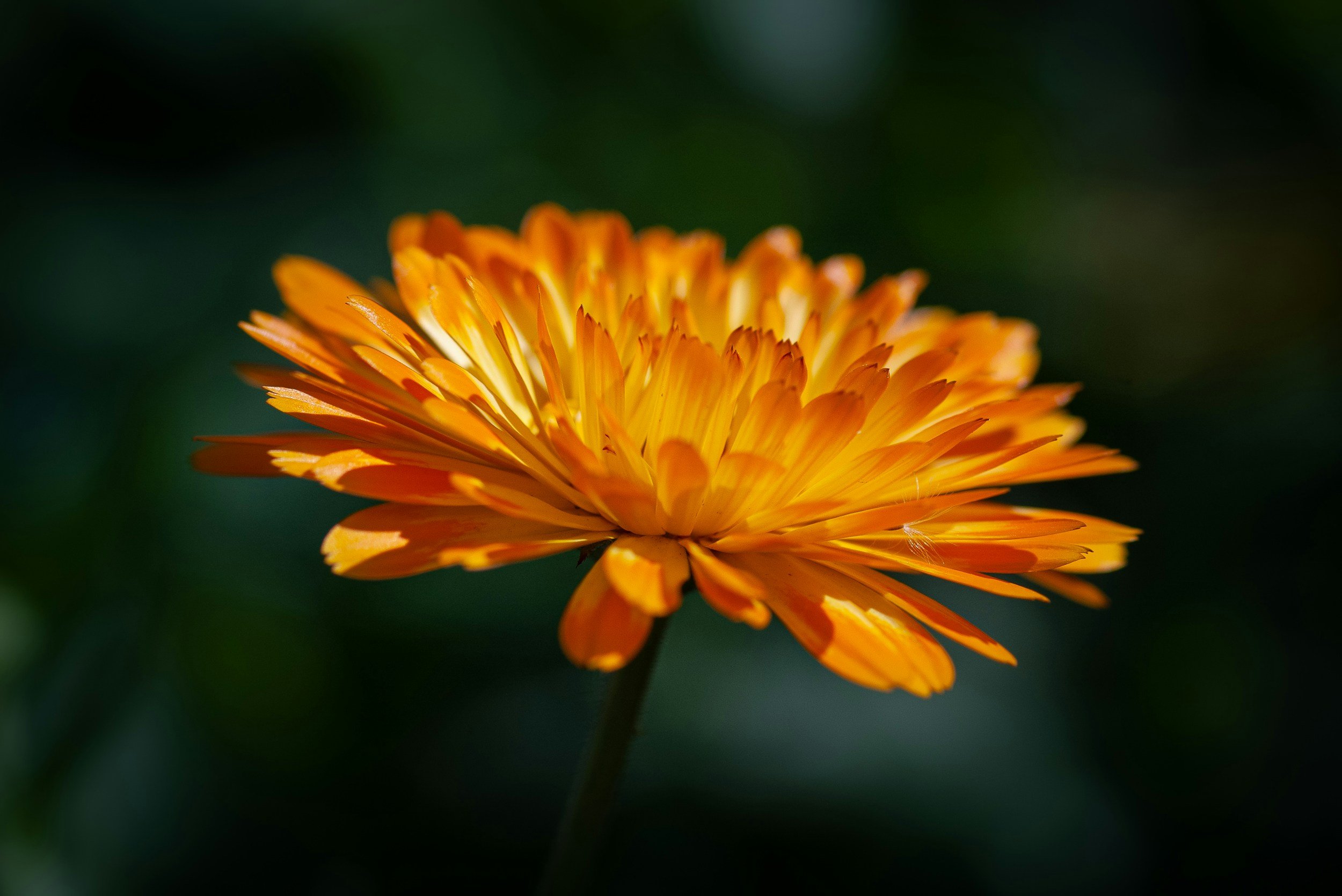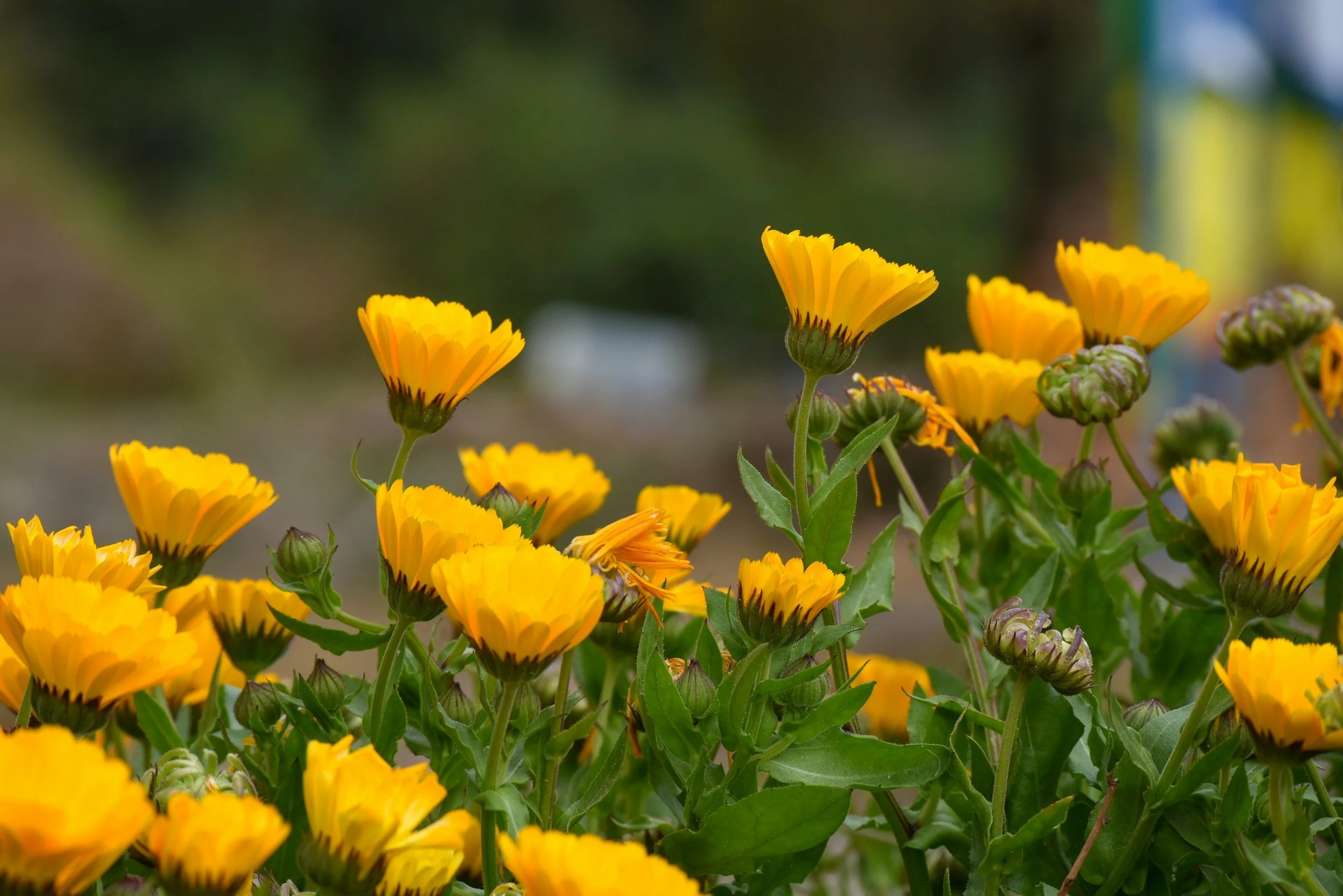
Calendula
Calendula (Calendula officinalis)
Calendula (Calendula officinalis) is a bright, gentle healer for the skin and lymph. Traditionally used for cuts, rashes, and slow-healing wounds, it soothes inflammation while promoting healthy repair. It’s one of the safest, most versatile herbs to have on hand for salves, washes, and everyday family remedies.
Plant family
Asteraceae.
Other names
Common/pot/marigold
English marigold
Parts used
Flos (flowers)
Typical forms of prescription
Infusions
Tinctures
External preparations, such as creams made from infused oil.
Dosage
Tincture (1:2): 10–30 ml pw; Dried herb: 3–12 g pd.
Calendula (Calendula officinalis) -Clinical Snapshot
Primary Actions
Lymphatic
Vulnerary
Antiseptic
Anti-inflammatory
Anti-fungal
Astringent
Emmenagogue
Cholagogue
Primary Indications
Skin issues: Wounds, inflammation, infection, eczema, burns, bruises
Digestive tract inflammation: Colitis, gastritis, IBS, Crohn’s disease, ulcers
Urinary system: Cystitis, prostatitis
Gynaecological issues: Vaginal thrush, dysmenorrhea
Lymphatic system: Lymph node congestion
Eye care: Conjunctivitis
⚠️ Cautions / Safety⚠️
Avoid internally during pregnancy (due to emmenagogue properties)
Use with caution during lactation and only under professional supervision
Calendula officinalis
Phytochemistry and Pharmacology
-
Action: Anti-inflammatory, antimicrobial, wound-healing, immunomodulating.
Use: These compounds help stimulate tissue repair and modulate inflammation, making Calendula highly effective for skin healing, ulcers, and immune responses. They also increase the absorption of other compounds through membranes (e.g., the skin or gut).
-
Action: Antioxidant, skin-protective, epithelial tissue support.
Use: Carotenoids like calendulin give Calendula its bright orange-yellow colour and help protect skin cells from damage. They're particularly valuable in creams and salves for dry, damaged, or inflamed skin.
-
Action: Antioxidant, anti-inflammatory, antihistamine, antimicrobial.
Use: Quercetin is a powerful antioxidant that helps reduce oxidative stress and allergic responses. It also supports blood vessel integrity and inhibits the growth of certain bacteria and viruses.
-
Action: Antimicrobial, anti-inflammatory, mild analgesic.
Use: The volatile oils in Calendula contribute to its antiseptic properties, helping to prevent infection in wounds and support overall skin health. They also contribute a pleasant aroma and calming effect.
Traditional use
Flowers dried for stock/broth/pottage, hence the name ‘pot’ marigold. They are used to comfort the heart and spirits and can also be used for headaches, jaundice, red eyes, toothaches, and ague.
Clinical Description
A key herb used for skin healing. It is commonly found in balms and creams for its vulnerary and anti-inflammatory actions. It increases tissue granulation in wounds and is well supported through research for wound healing, including post-radiation skin therapy.
Calendula is a mild herb used on sore nipples during lactation, but it is safe for nursing infants. The sticky resins felt when picking the heads are powerfully antimicrobial. The infused oil is used in antifungal preparations such as washes and creams for athlete's feet and pessaries for thrush.
It is also a key remedy when anti-inflammatory and vulnerary actions are required for healing gut tissues, e.g., gastritis, and gastrointestinal and oral mucosa, including ulcers. It is also used as a menstrual regulator; see cautions.
Cultivation/Harvesting
Annual in the UK (mild winters = perennial). Easy to grow from seed. A good companion plant. Pick flowers and stems back to the next node. Discard the stem and dry the whole flower head for use.
Please do not confuse it with Tagetes spp.
Key Botanical Features of Calendula (Calendula officinalis)
Growth
Growth Habit: Herbaceous, annual (sometimes short-lived perennial) plant, growing 30–60 cm (12–24 inches) tall.
Stem: Erect, branching, slightly hairy, and green.
Leaves
Type: Alternate, simple, and slightly sticky.
Shape: Oblong to lanceolate with slightly wavy or toothed margins.
Texture: Soft, hairy, and aromatic when crushed.
Flowers
Type: Daisy-like composite inflorescence with ray and disc florets.
Colour: Bright yellow to deep orange.
Diameter: 3–7 cm (1–3 inches) wide.
Blooming Period: Long-lasting, from spring to late autumn.
Pollination: Insect-pollinated (bees, butterflies).
Fruits & Seeds
Fruit Type: Curved achenes with rough surfaces, forming a crescent shape.
Seed Dispersal: Primarily by wind and self-sowing.
Habitat & Growth Conditions
Climate: Thrives in temperate regions.
Soil: Prefers well-drained, moderately fertile soil.
Sunlight: Requires full sun for optimal blooming.
Distribution: Native to Southern Europe but widely cultivated worldwide.
Roots
Type: Fibrous root system.
Function: Supports regrowth and easy propagation.
Sustainability/Conservation
Abundant and easily grown in gardens and allotments.





Sources
Bartram, T. (1998). Bartram’s encyclopedia of herbal medicine. Constable.
Fisher, C. (2018). Materia medica of western herbs (Rev. ed.). Aeon Books.
Hedley, C., & Shaw, N. (2020). A herbal book of making and taking. Aeon Books.
Hoffmann, D. (2003). Medical herbalism: The science and practice of herbal medicine. Healing Arts Press.
McIntyre, A. (2019). The complete herbal tutor (Revised & expanded ed.). Aeon Books.
Royal Botanic Gardens, Kew. (n.d.). Plants of the World Online. https://powo.science.kew.org/
Mills, S., & Bone, K. (2013). Principles and practice of phytotherapy: Modern herbal medicine (2nd ed.). Churchill Livingstone; Elsevier.
Barnes, J., Anderson, L. A., & Phillipson, J. D. (2013). Herbal medicines (3rd ed.). Pharmaceutical Press.
Benzie, I. F. F., & Wachtel-Galor, S. (Eds.). (2011). Herbal medicine: Biomolecular and clinical aspects (2nd ed.). CRC Press; Taylor & Francis.
Evans, W. C. (2009). Trease and Evans’ pharmacognosy (16th ed.). Elsevier.
Disclaimer: This page is for educational purposes only. Consult a qualified medical herbalist before using herbs, especially during pregnancy, when trying to conceive, while breastfeeding, for medical conditions, or with children.
Read the full disclaimer → Medical Disclaimer.




